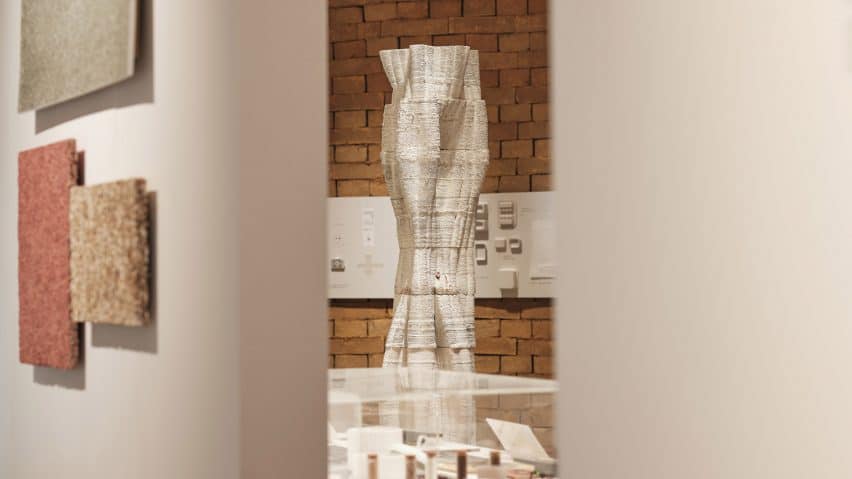In the city of London, there is a practise, for the first time, Blast Studio has created a process for 3D printing with living mycelium, which they have utilised to create a column that can be harvested for mushrooms before being used as a structural building element.
The ridged, undulating construction of the Tree Column, which stands two metres tall, is reminiscent of a tree trunk.
Its shape was created using an algorithm to increase the structural capacity of the column while also providing optimal growing conditions for mycelium, which is the root system of fungi.
About the Development
Blast Studio is attempting to scale up the technology such that it can be used to print a pavilion, with the goal of eventually printing large buildings. Co-founder Paola Garnousset said this may effectively allow cities to generate architecture from their own garbage while providing food for their citizens.
The column was built by combining mycelium with a feedstock of trash coffee cups gathered from across London and feeding it through a custom-made cold extruder, similar to those used for 3D printing with clay. Mycelium consumes the pulped paper cups and grows to take over the entire column, creating mushrooms that may be picked off and eaten. After drying, the mycelium root structure is transformed into a load-bearing architectural feature with natural insulating and fire-retardant qualities.
The plan is to 3D print a living structure in situ that will be inoculated with various mushroom kinds, some with excellent structural resistance and others that are delicious.
The construction of the Tree Column begins with shredding paper coffee cups and boiling them in water to create sterile paper pulp. This is then combined with mycelium and any desired natural pigments to provide colour.
The resulting biomass paste is extruded through an extruder and 3D-printed layer by layer to generate ten distinct modules, which are piled into a 2.1-metre-high column and fused together with more mycelium.
Its various folds and fissures were generatively intended to build a structure that could support itself throughout the additive manufacturing process while also assisting mycelium growth by producing sheltered “microclimate pockets” that trap moisture down the length of the column.
For the first three to four weeks, until the mycelium has expanded to cover the entire column, it must be kept in a controlled humid climate similar to that of a greenhouse.
The material is then dried at 80 degrees Celsius, effectively killing the organism and stopping its growth while solidifying the material, which Blast Studio estimates has a similar structural capacity to medium-density fiberboard (MDF).
If a Tree Column is damaged or no longer needed, it can be recycled and reprinted to form a new architectural element.
But Blast Studio is also exploring at constructing a self-repairing version of the pillar by drying the mycelium just enough to cease propagation without killing the organism, which would allow it to re-grow over any gaps once exposed to water.
A Tree Column is currently on display at London’s Design Museum as part of the Waste Age exhibition, and it will serve as the first building block for the Tree Pavilion, which the studio hopes to build by the end of the year to demonstrate that its technology can be applied to a larger architectural scale.
A number of other architects and designers, including Dirk Hebel and New York studio The Living, have also developed experimental pavilions utilising mycelium instead of standard emissions-intensive structural materials such as concrete and steel.
In most cases, the mycelium is grown in a mould to make bricks. Blast Studio’s 3D-printing technology, on the other hand, can construct complicated designs without the use of formwork that are optimised to improve the performance of the building element while lowering its weight and material use.
While these applications are still in their infancy, a number of firms are already striving to develop certified insulation and acoustic panels made from mycelium, which can outperform their plastic counterparts while sequestering carbon during their development phase.
Subscribe to AM Chronicle Newsletter to stay connected: https://bit.ly/3fBZ1mP
Follow us on LinkedIn: https://bit.ly/3IjhrFq
Visit for more interesting content on additive manufacturing: https://amchronicle.com/


